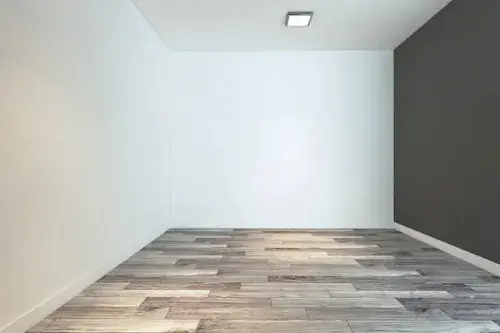What is the Best Way to Soundproof Walls and Ceiling of a Room?

In modern construction, soundproofing plays a crucial role in creating a peaceful and comfortable environment.
Whether it’s a home, office, or commercial space, reducing noise pollution enhances the quality of life and productivity.
We understand the importance of soundproofing and provide expert solutions to minimize unwanted noise effectively.
Understanding Soundproofing
Soundproofing is the process of reducing or eliminating sound transmission from one area to another. There are two main types of noise that soundproofing aims to control:
- Airborne Noise: Sounds that travel through the air, such as voices, music, and television.
- Impact Noise: Vibrations caused by movement or objects hitting a surface, such as footsteps or furniture being moved.
Effective soundproofing addresses both types of noise by using materials and techniques that absorb, block, or isolate sound waves.
Best Methods to Soundproof Walls
Soundproofing walls requires strategic layering of materials to minimize noise transmission. Here are the most effective ways to achieve this:
- Add Mass with Soundproof Drywall
One of the simplest ways to reduce sound is by increasing the density of walls. Specialized drywall, such as QuietRock or double-layered standard drywall with Green Glue, helps absorb sound waves and prevent them from passing through.
- Use Acoustic Panels
Acoustic panels made of foam, fabric, or fiberglass absorb sound waves and reduce echo within a room. These panels are ideal for home theaters, music studios, and office spaces where sound clarity is crucial.
- Install Mass-Loaded Vinyl (MLV)
Mass-Loaded Vinyl is a dense, flexible material that acts as a barrier to sound waves. It is typically installed between drywall layers or directly on existing walls to enhance soundproofing.
- Seal Gaps and Cracks
Even the best soundproofing materials won’t be effective if there are gaps or cracks in walls. Using acoustic sealant or weather stripping around doors, windows, and baseboards prevents sound leakage.
- Use Soundproof Insulation
Specialized insulation, such as Rockwool or Owens Corning Acoustic Batts, absorbs sound energy and prevents it from passing through walls. This type of insulation is particularly effective in reducing airborne noise.
- Create a Resilient Channel System
A resilient channel system decouples drywall from wall studs, reducing the transmission of vibrations. This method is commonly used in apartments and shared living spaces to minimize noise between rooms.
- Install a Second Layer of Drywall with Green Glue
Green Glue is a damping compound applied between two layers of drywall to absorb sound vibrations. This technique significantly reduces sound transfer without requiring major structural changes.
Best Methods to Soundproof Ceilings
Soundproofing ceilings is essential in multi-story buildings to prevent noise from traveling between floors. Here are the best techniques for soundproofing ceilings:
- Add a Drop Ceiling with Acoustic Tiles
A suspended or drop ceiling with acoustic tiles helps absorb sound and reduce echoes. This method is commonly used in offices and commercial spaces for effective noise reduction.
- Install Soundproof Insulation in the Ceiling Cavity
Just like in walls, placing soundproof insulation in the ceiling cavity absorbs sound waves and reduces noise transmission. This is particularly useful for homes with open floor plans.
- Use Resilient Sound Isolation Clips
Sound isolation clips are installed between the ceiling joists and drywall to decouple the ceiling from structural vibrations. This prevents impact noise from traveling through the building structure.
- Apply Acoustic Foam Panels
Acoustic foam panels can be installed on ceilings to reduce echo and improve sound clarity. These panels are available in various designs to blend seamlessly with interior aesthetics.
- Use Mass-Loaded Vinyl (MLV) on the Ceiling
Applying MLV directly to the ceiling creates an additional sound barrier, reducing noise from above. This is particularly effective in apartment buildings and office spaces.
- Install Double Drywall with Green Glue
Similar to walls, adding a second layer of drywall with Green Glue to the ceiling enhances soundproofing by absorbing sound vibrations before they pass through.
- Carpets and Rugs on Upper Floors
While not a direct ceiling solution, placing thick carpets and rugs on upper floors helps absorb impact noise before it reaches the ceiling below.
Comparison Chart: Soundproofing Materials
To help you choose the best soundproofing materials, here’s a comparison based on cost and effectiveness:
| Soundproofing Material | Cost | Effectiveness |
| Soundproof Drywall | High | Very High |
| Acoustic Panels | Medium | Medium |
| Mass-Loaded Vinyl (MLV) | Medium | High |
| Acoustic Sealant | Low | Medium |
| Soundproof Insulation | Medium | High |
| Resilient Channel System | High | Very High |
| Green Glue with Drywall | Medium | High |
Additional Soundproofing Tips
To further enhance soundproofing, consider the following additional tips:
- Use heavy curtains or soundproof blinds to block external noise.
- Install solid-core doors instead of hollow-core doors for better noise insulation.
- Arrange furniture strategically, such as placing bookshelves against shared walls to act as an additional sound barrier.
We specialize in providing customized soundproofing solutions for residential and commercial spaces. Our team of experts ensures that every project meets the highest standards for noise reduction and comfort. Whether you need to soundproof a single room or an entire building, we have the expertise and materials to deliver the best results.
